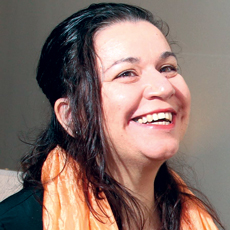
Mrs. A looked at the new red plates and her face lit up. “Roja Bien!” she commented happily and smiled. After she ate her lunch, she cleaned off her plate, put the utensils on top and stayed at the table, enjoying a cup of tea and conversation with other residents.
Alzheimer’s Disease has a profound effect on a person’s well-being. In an effort to improve one important aspect of resident life on a memory care neighborhood, we decided to take a closer look at the dining experience. Meal times encompass a large part of residents’ daily routine. Much of the day’s activities revolve around the preparation, service and enjoyment of meals.
The “red plate study” conducted at Boston University in 2004 by researchers Cronin-Golomb and Dunne was designed to assess whether older adults with AD would increase their meal consumption from red plates rather than typically used white plates. The study found the red plates to be beneficial; older adults dining from red plates ate 25% more than those dining from white plates. The color contrast was thought to make the foods stand out more visibly for residents with visual impairment, and the color red has been noted to stimulate appetite.
Through the generosity of a grant from New York State Senator Jeffrey Klein’s office, we decided to adapt this study for our community. Since we are a kosher organization and use different plates for meat and dairy meals, we selected use of red plates for meat meals and blue plates for dairy meals with contrasting place mats. Our interdisciplinary team, led by a clinical dietitian and a music therapist, conducted our informal survey using both red and blue plates on one of our memory care neighborhoods. We used a rated scale as well as qualitative data to determine the impact of the initiative of using colored plates as compared to white plates. We looked at many psychosocial factors, as well as meal intake and resident weights.
Amongst the many positive responses, we found 60% of residents showed an improvement in meal intake while 87% presented with brightened affect and increased socialization during meals. We posit that, in addition to visual contrast benefits, the blue and red dishes helped create a more person-centered, home-like environment for our residents. Their comments were positive: “Pretty Plates,” “Beautiful,” and “I love the color.” We also observed the excitement of the positive aesthetic change amongst nursing and dining staff.
The change in dish color was felt by the entire community on the memory care neighborhood. We hope to expand these holistic approaches to other areas of the memory care dining experience.
Makaria Psiliteli, MA, MT-BC, LCAT, and Devorah Levin, MPH, RD, CDM, work at the Hebrew Home at Riverdale.




